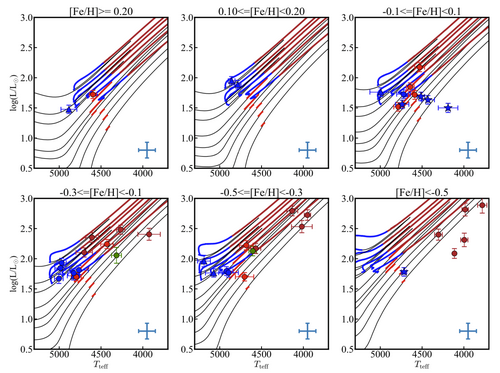Dr. Yutao Zhou from National Astronomical Observatories of Chinese Academy of Sciences (NAOC) built the largest homogeneous high-resolution (R>30,000) Li-rich giant sample based on LAMOST DR4, which was led by Prof. Jianrong Shi, a research professor at NAOC. Associating with the high-resolution observations, their results suggest that the origins of Li enrichment are most likely to be associated with the extra mixing in the stellar interior, and the external sources might only make a minor contribution. It is crucial to the stellar structure and evolution.
This work has been published online in the Astrophysical Journal on June 1, 2019 at https://iopscience.iop.org/article/10.3847/1538-4357/ab1b4b.
According to the standard stellar evolutionary model, as a star evolves to the red giant branch (RGB), the Li abundance A(Li) of star will be dropped down with a factor of 60~90 due to the large scale of convection. The model predicts that Li abundance should not exceed ~ 1.5 dex. However, a RGB star with A(Li) = 3.0 was accidentally discovered in 1983. About 1% of RGB stars shown the Li-rich phenomenon have been found since then. These findings challenge the standard stellar evolutionary model, which raise the hotly debate and interest in the Li-rich giant.
Until 2018, ~ 200 Li-rich giants were confirmed with high-resolution spectra by different teams. The rareness of Li-rich giant blocks the systematic investigation about the Li-rich phenomenon. It is necessary to construct a large and homogeneous Li-rich sample. LAMOST is ideal to search the candidates of Li-rich giant due to its large amount low-resolution spectra. With the help of high-resolution observations, NAOC staff confirmed 44 Li-rich giants by five high-resolution telescopes including APO 3.5m, APF 2.4m, Subaru 8.2m, Lijiang 2.4m & 1.8m. Based on the high signal-noise and high-resolution spectra, they found that the Li-rich giants concentrate at the evolutionary status of the RGB bump, red clump (RC), and asymptotic giant branch (AGB). Moreover, various Li-rich episodes take place at different evolutionary stages.
It is hard to firmly distinguish the RC from the RGB bump by HR diagram. Further research with asteroseismic information from Kepler/Tess is needed to confirm stellar evolutionary phase, which might provide fascinating insights for the Li-rich problem, such as the ratio of Li-rich giants in different phases.
Prof. Gang Zhao at NAOC, Prof. K. Pan at New Mexico University and Dr. S. Blanco-Cuaresma at Harvard-Smithsonian Center for Astrophysics have contributed to this work as key co-authors. This work was supported by National Science Foundation of China and Chinese Academy of Sciences.

Fig: Positions of 44 Li-rich giants displayed in the HR diagrams. The portions of PARSEC evolutionary tracks in red, blue, and brown denote the phase of RGB bump, RC, and AGB, respectively, while the symbols with same colors represent the stars located at the corresponding evolutionary phases. (Credit: LAMOST )

Address: 20A Datun Road, Chaoyang District, Beijing, China code: 100012
Tel: 010-64888708 E-mail: naoc@nao.cas.cn

